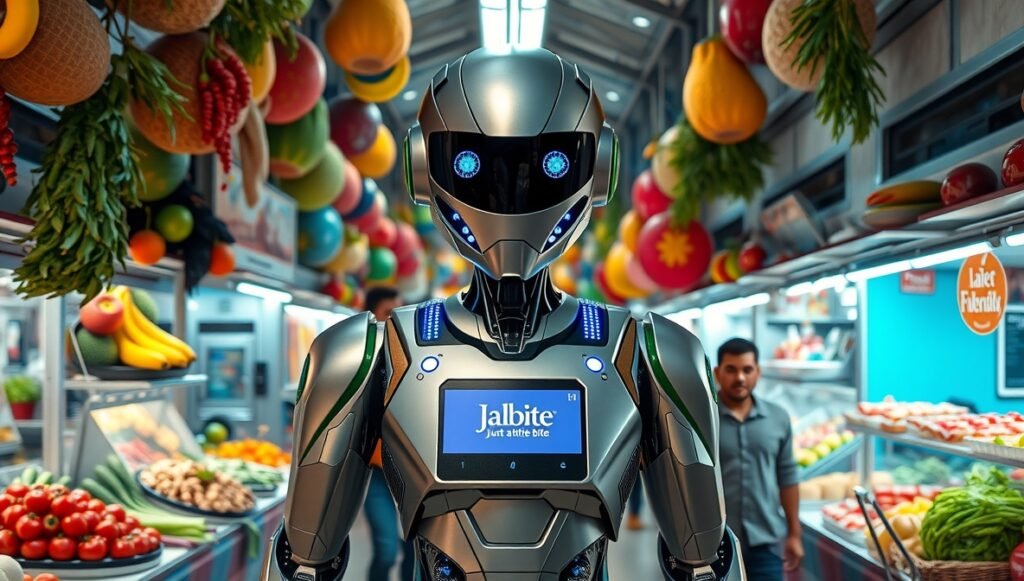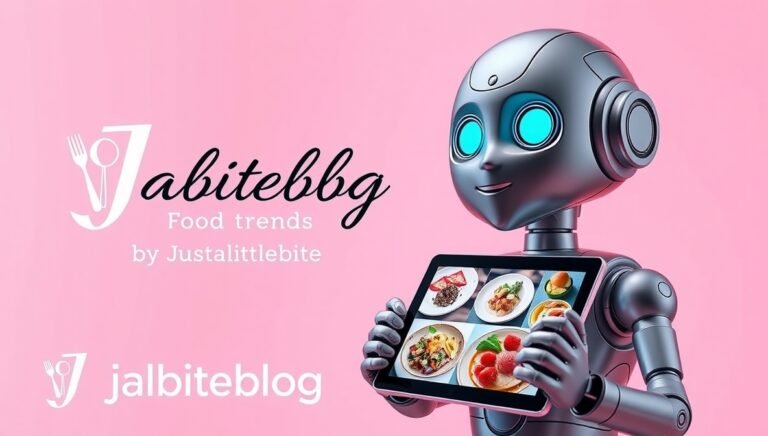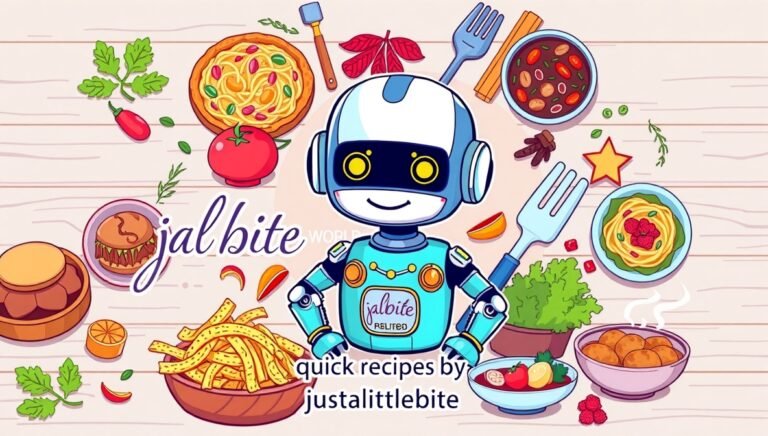From Justalittlebite Food Trends Jalbiteblog – Exploring the Culinary Future
Food has always been an expression of culture, creativity, and change. Every decade brings new flavors, techniques, and dining habits that shape how people eat and live. From justalittlebite food trends jalbiteblog, it becomes clear that the culinary world is not standing still—it’s evolving rapidly. In this digital era, where social media and technology influence nearly every aspect of our lives, the way we cook, eat, and share meals has undergone a transformation that connects taste, tradition, and innovation.
People today are more conscious of what they consume, where ingredients come from, and how meals are presented. From local kitchens to international restaurants, food lovers are constantly redefining what good food means. This article dives deep into the latest trends influencing modern gastronomy and how they reflect the balance between sustainability, health, and creativity.
The Rise of Sustainable Eating
In recent years, sustainability has become the foundation of many food movements. The culinary industry has recognized its role in climate change, leading to a shift toward eco-conscious consumption. From justalittlebite food trends jalbiteblog, sustainability isn’t merely a buzzword—it’s a philosophy guiding everything from sourcing to plating. Restaurants now focus on reducing food waste, using local produce, and cutting carbon footprints through smarter supply chains.
Sustainable eating emphasizes seasonality and biodiversity. Farmers’ markets are flourishing as consumers prefer farm-to-table experiences. Even major food corporations are adapting by introducing eco-friendly packaging and supporting regenerative agriculture. This change is more than ethical—it’s delicious, proving that responsible choices can taste extraordinary.
Plant-Based Innovation
The plant-based revolution has transcended its niche origins. With advancements in food science, chefs can now recreate textures and flavors once exclusive to animal-based dishes. From justalittlebite food trends jalbiteblog, plant-based cuisine continues to grow because it satisfies not only environmental needs but also the desire for variety and flavor exploration.
Restaurants worldwide are experimenting with jackfruit, lentils, mushrooms, and lab-grown alternatives to craft dishes that mimic meat in surprising ways. Brands have introduced plant-based seafood, dairy, and eggs, expanding options for conscious consumers. Even traditional cuisines are being reinvented—think vegan ramen, plant-based biryani, or tofu-based cheesecakes. This evolution celebrates compassion and creativity while maintaining culinary depth.
The Tech-Driven Kitchen
Technology is transforming how we cook and experience food. Smart kitchens, AI-powered appliances, and virtual recipe assistants have made cooking more accessible and precise. From justalittlebite food trends jalbiteblog notes that modern kitchens are becoming laboratories of innovation, where gadgets enhance efficiency and consistency.
Devices like smart ovens can detect food type, adjust temperature automatically, and connect to apps that guide cooking step-by-step. Meanwhile, data-driven meal planning helps reduce waste by tracking ingredients and expiration dates. Beyond convenience, these advancements are making home cooking a personalized experience—tailored to dietary preferences and time constraints.
In professional settings, robotics and AI are streamlining restaurant operations. Automated fryers, digital sommeliers, and AI recipe developers are helping chefs focus on creativity rather than routine. Technology, once seen as impersonal, is now an essential ingredient in culinary excellence.

Fusion Cuisine and Global Palates
The world’s culinary borders are blending like never before. Dishes that once belonged to specific regions are now being reimagined across continents. From justalittlebite food trends jalbiteblog, fusion cuisine represents cultural exchange through flavor, reflecting global connectivity and curiosity.
You’ll find Korean tacos in Los Angeles, sushi burritos in New York, and butter chicken pizza in London. These dishes symbolize experimentation and inclusivity. Travelers and digital food explorers crave novelty, and chefs are responding with creations that blend techniques and ingredients from multiple traditions.
However, this trend also comes with a deeper awareness—respect for origins. Today’s chefs prioritize authenticity even while fusing cuisines. They research traditional recipes and adapt them thoughtfully, creating dishes that honor history while celebrating innovation.
Mindful Eating and Wellness
Food isn’t just about flavor—it’s about feeling. Health-conscious dining has evolved from restrictive dieting into mindful eating, emphasizing balance and nourishment. From justalittlebite food trends jalbiteblog highlights how consumers are shifting toward foods that enhance both body and mind.
Superfoods like quinoa, chia, and matcha continue to dominate, but the focus has expanded to include mental wellness. Adaptogens, probiotics, and fermented foods are increasingly integrated into daily meals for their stress-reducing and gut-friendly benefits. Smoothie bowls, bone broths, and herbal teas are now staples in many households. the jalbiteblog food trends by justalittlebite
Restaurants and cafes are also embracing transparency by listing nutritional benefits and sourcing details. The goal isn’t perfection—it’s awareness. This wellness movement redefines indulgence, proving that eating well can be both joyful and nourishing.
Aesthetic Presentation and Social Media Influence
We eat with our eyes first, and in the age of Instagram and TikTok, visual appeal drives culinary creativity. Every dish is now a potential story, ready to be shared online. From justalittlebite food trends jalbiteblog explores how aesthetics are shaping not just plating styles but also restaurant design and brand identity.
Colorful smoothie bowls, gradient lattes, and photogenic desserts dominate digital feeds. Chefs now design dishes that photograph beautifully under natural light, using vibrant ingredients like edible flowers, beetroot powder, and butterfly pea tea. Even casual eateries are embracing “Instagrammable” spaces with minimalist decor and unique lighting.
This shift has given rise to food influencers and digital critics who shape consumer preferences. However, beyond the visuals lies substance—people still crave authentic taste and experience. The most successful trends are those that marry beauty with genuine culinary excellence.
Local and Hyper-Regional Focus
In a world connected by globalization, there’s a growing desire to rediscover local roots. Chefs and diners alike are celebrating regional ingredients and forgotten recipes. From justalittlebite food trends jalbiteblog points out that local dining isn’t just nostalgic—it’s revolutionary. By exploring indigenous flavors, communities preserve heritage while supporting small-scale farmers and artisans.
Local cuisines are being revived through storytelling. Food festivals, documentaries, and cookbooks highlight traditional methods like fermentation, stone-grinding, and slow cooking. These practices foster sustainability and flavor depth. Restaurants featuring menus based entirely on local produce offer an authentic experience that connects diners to place and history.
This hyper-local movement also strengthens community bonds, encouraging people to eat seasonally and appreciate the uniqueness of their region’s bounty.
Gourmet Street Food
Street food has evolved from humble beginnings into a global phenomenon. Once associated with quick snacks, it’s now entering fine dining spaces with gourmet interpretations. From justalittlebite food trends jalbiteblog highlights how chefs are reimagining street classics into refined, flavorful experiences that blend nostalgia with sophistication.
From bao buns served on porcelain plates to upscale versions of tacos and kebabs, the street-to-table movement has redefined what casual dining means. The appeal lies in its familiarity—these foods tell stories of culture and comfort. Cities around the world, especially in the United States, are embracing this hybrid concept where food trucks, markets, and pop-ups coexist with Michelin-starred restaurants.
This democratization of flavor reminds us that culinary innovation doesn’t always start in luxury kitchens—it often begins on bustling streets with creative cooks and bold spices.
Experimental Ingredients and Future Foods
The next frontier of gastronomy lies in experimentation. Chefs are turning to unconventional ingredients, molecular gastronomy, and bioengineering to push culinary limits. From justalittlebite food trends jalbiteblog captures this futuristic spirit where innovation meets sustainability and flavor.
Insects, algae, and lab-grown proteins are emerging as alternative sources of nutrition. While these ideas may seem radical, they address real challenges—food scarcity, climate impact, and population growth. Molecular techniques like spherification and foam creation transform familiar dishes into multi-sensory experiences.
Moreover, edible 3D printing and AI-generated recipes are redefining creativity. The future kitchen could be a fusion of art, science, and technology, where sustainability drives imagination rather than limiting it.
Beverage Evolution and Mixology
Drinks have become just as expressive as food. From artisanal teas to botanical cocktails, beverages are now crafted with the same level of artistry and care. From justalittlebite food trends jalbiteblog observes that the beverage scene is witnessing a renaissance fueled by innovation, health, and sensory pleasure.
Non-alcoholic cocktails, also called “mocktails,” are gaining sophistication. Crafted with herbs, cold-brewed teas, and exotic fruits, these beverages cater to mindful drinkers seeking flavor without intoxication. Meanwhile, coffee culture continues to evolve, with baristas experimenting with nitrogen infusions, single-origin beans, and sustainable brewing methods.
Tea sommeliers are introducing ancient rituals to modern audiences, while kombucha and kefir remain popular for their probiotic properties. In every sip, there’s a blend of tradition, artistry, and innovation redefining beverage culture for a new generation.
Food Delivery and Virtual Dining
The digital revolution has reimagined the restaurant experience. With the rise of delivery platforms and virtual kitchens, convenience meets culinary excellence. From justalittlebite food trends jalbiteblog explains that ghost kitchens—restaurants operating exclusively for delivery—are transforming the dining landscape.
Consumers crave restaurant-quality meals at home, prompting chefs to design menus optimized for delivery without compromising quality. Packaging innovations preserve flavor and texture, while data analytics help restaurants predict demand and reduce waste.
This model has empowered independent chefs and small businesses to reach wider audiences without traditional overhead costs. Virtual dining also fuels creativity—offering themed meals, seasonal menus, and limited-edition collaborations that attract digital diners.
The concept of dining has expanded beyond physical spaces, turning every smartphone into a gateway to global cuisines.
The Psychology of Flavor
Understanding why we love certain foods is becoming a science in itself. Sensory psychology explores how aroma, color, texture, and even sound influence taste perception. From justalittlebite food trends jalbiteblog reveals that chefs are now designing dishes that engage all senses, turning meals into immersive experiences.
For instance, the crunch of tempura or the aroma of freshly baked bread can trigger emotions and memories. Restaurants use multisensory cues—ambient music, plate design, and lighting—to enhance flavor perception. The result is not just eating but feeling the meal.
As neuroscience advances, food becomes a tool for storytelling and emotional connection. Every bite tells a narrative that goes beyond nutrition, engaging memory, mood, and culture simultaneously.
Culinary Storytelling and Experience Dining
Dining has evolved into a form of entertainment. People now seek experiences that blend performance, storytelling, and emotion. From justalittlebite food trends jalbiteblog showcases restaurants offering theatrical plating, chef’s tables, and immersive themes where guests become part of the narrative.
From candle-lit farm dinners to molecular gastronomy shows, experiential dining turns food into an event. Menus unfold like stories, each course revealing a new chapter. Even digital storytelling—through documentaries, cooking shows, and social media—plays a role in shaping how people connect with food.
These experiences go beyond taste; they build memories. Whether it’s an open-fire feast in the mountains or a minimalist omakase bar, diners crave authenticity and emotion, not just full plates.
The Role of Community and Shared Tables
The essence of food lies in connection. Sharing meals builds relationships, celebrates culture, and bridges divides. From justalittlebite food trends jalbiteblog reminds us that community dining is returning, from supper clubs to communal tables in urban restaurants.
Food brings people together—friends, families, and even strangers. After years of social distancing and isolation, there’s renewed appreciation for togetherness. Restaurants are curating family-style menus and community events to rekindle that human bond.
This movement celebrates inclusivity and empathy. It reminds us that while technology and trends shape dining, the heart of food remains in shared laughter, conversation, and comfort.
The Future of Culinary Innovation
As we look ahead, the future of food will balance tradition and progress. Sustainability, technology, and wellness will remain at the forefront, but creativity will always be the soul of gastronomy. From justalittlebite food trends jalbiteblog suggests that tomorrow’s chefs will act not only as cooks but also as innovators, educators, and environmental stewards.
We can expect continued integration of AI, 3D printing, and precision fermentation in culinary arts. Yet, simplicity and authenticity will remain timeless values. People will continue seeking meaningful connections through food—whether it’s a home-cooked meal or a fine dining adventure.
The evolution of food is ultimately a reflection of humanity itself—curious, adaptable, and endlessly creative.

Conclusion
The culinary world stands at an exciting crossroads where innovation meets heritage, and science meets soul. Every plate tells a story of evolution, passion, and purpose. Insights from justalittlebite food trends jalbiteblog reveal that the journey of food goes far beyond recipes—it’s about reimagining how we nourish, express, and connect.
From sustainability to sensory experiences, from plant-based movements to futuristic ingredients, these trends define how we eat today and envision tomorrow. As boundaries blur and cultures intertwine, one truth remains: food is universal language, constantly rewriting its own dictionary.
In embracing these global culinary shifts, we’re not just adapting to trends—we’re shaping the future of flavor, creativity, and human connection through every bite.






